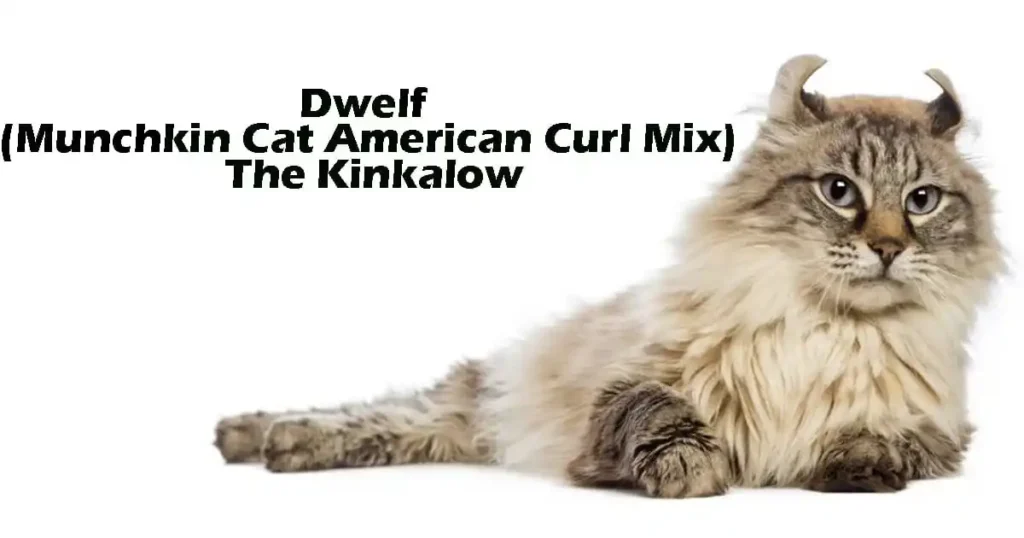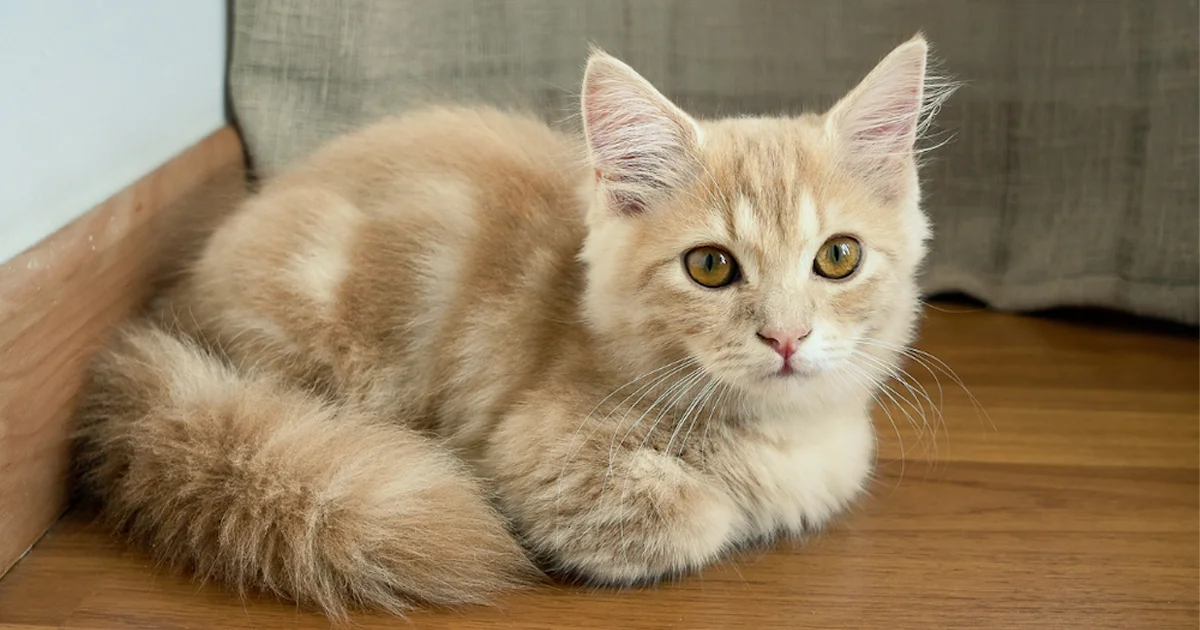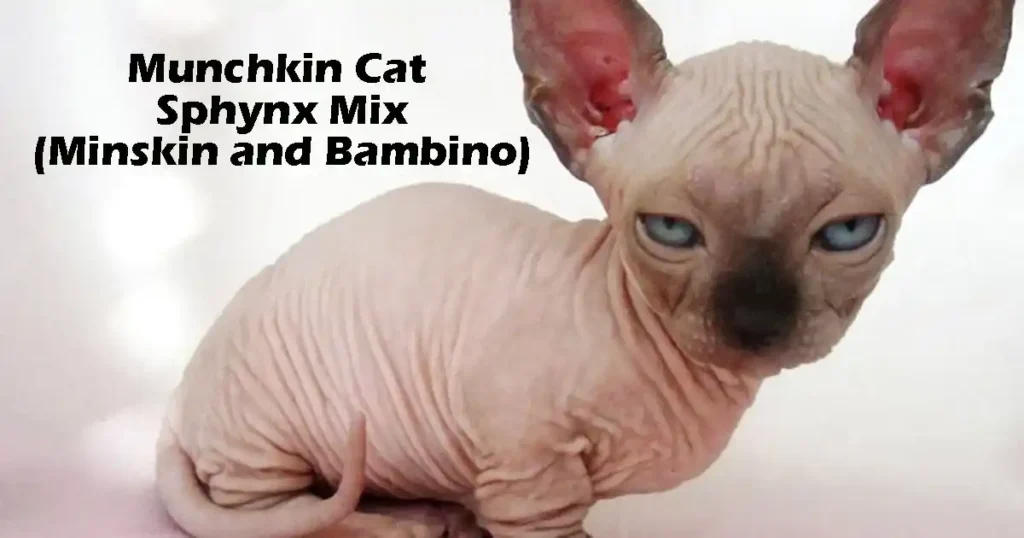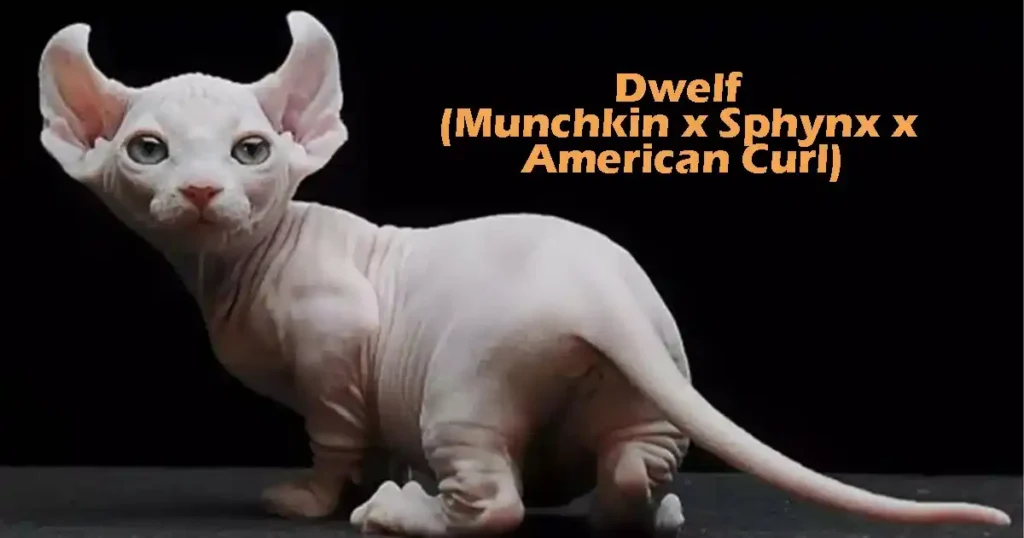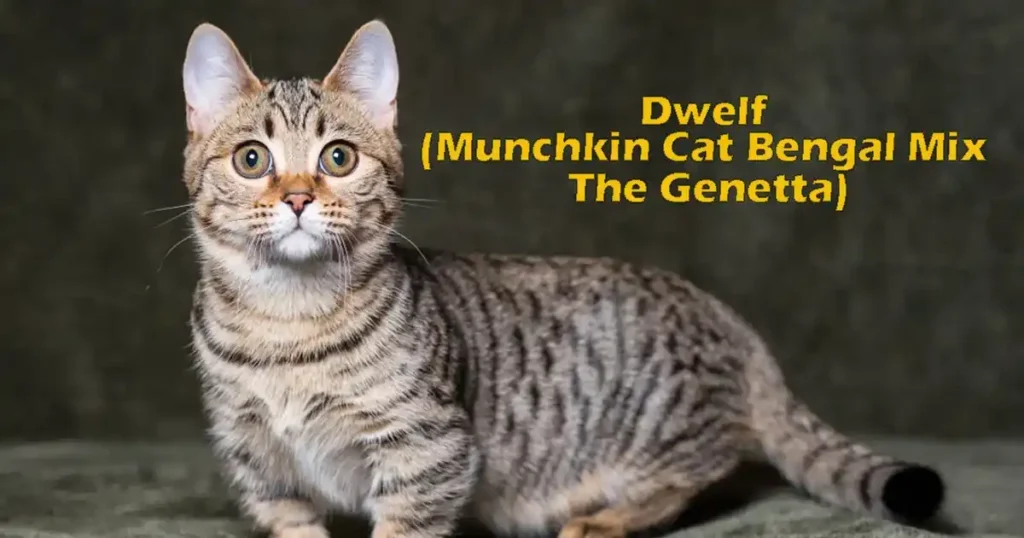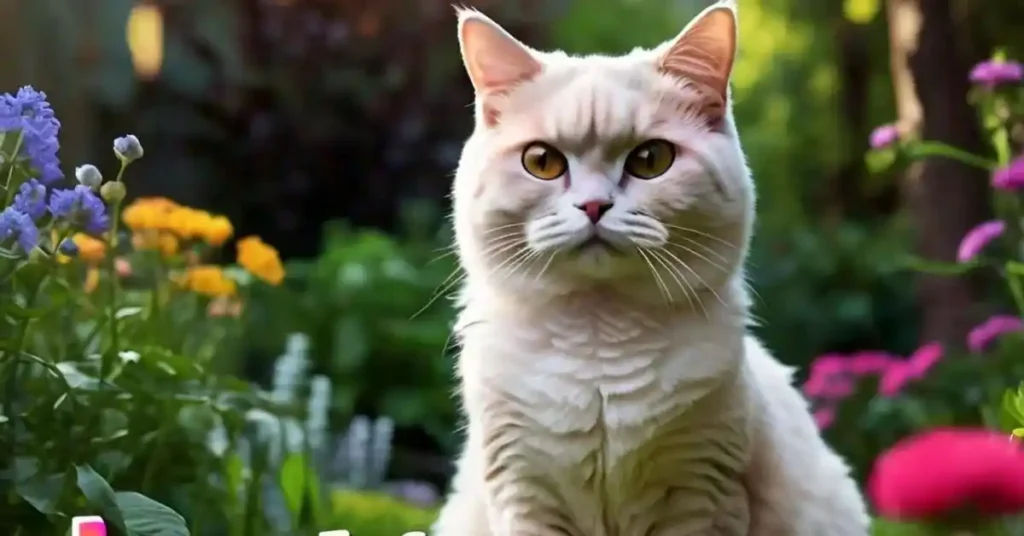American Curl The Kinkalow is a unique and relatively new cat breed resulting from the crossbreeding of the Munchkin and American Curl. This breed was developed in the 1990s by breeder Terri Harris, who aimed to combine the distinctive traits of both parent breeds: the Munchkin’s short legs and the American Curl’s uniquely curled ears.
Kinkalows are known for their playful and affectionate nature. They maintain a kitten-like demeanor throughout their lives, making them excellent companions for families, children, and other pets. Their sociable nature encourages interaction, and they enjoy activities such as chasing toys and climbing.
This crossbreed embodies the best traits of both parent breeds, showcasing a playful personality and a distinctive look. The Kinkalow’s origin traces back to the 1990s in the United States, where breeder Terry Harris aimed to explore the combination of the Munchkin and American Curl. The result is a rare and delightful cat breed that continues to win hearts!
Munchkin x American Curl history
The Munchkin x American Curl hybrid, commonly referred to as the Kinkalow, is a captivating breed that combines the playful characteristics of the Munchkin with the unique features of the American Curl. This crossbreed is known for its distinctive appearance and engaging personality.
The Munchkin, known for its playful personality and short legs due to a genetic mutation, and the American Curl, characterized by its curled ears and affectionate nature, were the perfect candidates for this experiment. Harris’s breeding program successfully combined these traits, resulting in the Kinkalow, a breed that inherits the playful demeanor of the Munchkin and the sociable nature of the American Curl.
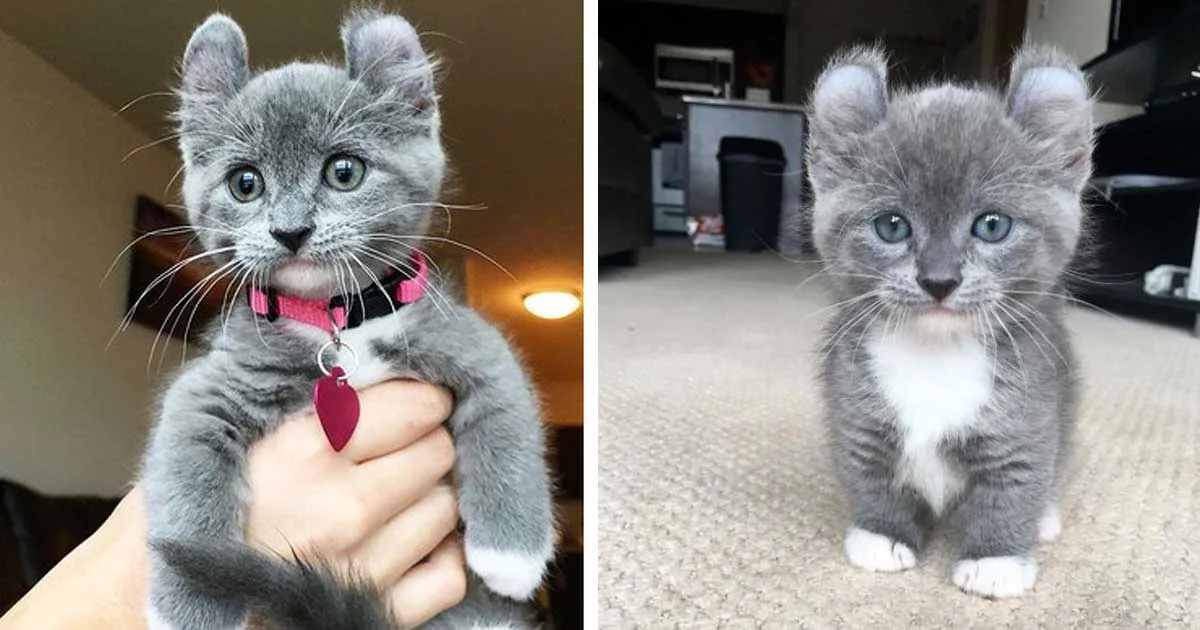
Playful Charm of the Munchkin x American Curl Hybrid
The world of cat breeding has produced some fascinating hybrids, and the Munchkin x American Curl mix is a perfect example of an exotic, playful companion with a unique twist. Combining the short legs of the Munchkin with the signature curled ears of the American Curl, this hybrid cat is a true marvel for pet lovers. If you’re wondering about the traits and characteristics of the Munchkin American Curl, you’ve come to the right place.
A Curly Munchkin cat brings together the best of both worlds: the Munchkin’s compact, playful nature and the American Curl’s distinctive ear shape. These cats are known for their energetic and affectionate personalities, and their curly ears are what set them apart from other breeds. These cats can make a fun, affectionate pet with a look that is truly unique.
- Curled ears: Gently curled back, giving them a unique and cute expression.
- Short legs: Compact and proportional, offering agility despite their stature.
- Soft coat: Can come in a variety of colors and patterns, with a luxurious texture.
The Unique Traits of the Munchkin American Curl Mix
The Munchkin American Curl breed is still quite rare, but if you’re lucky enough to find one, you’ll be greeted by a cat with an adorable, distinctive appearance.
Their curly hair and short stature are key features that make this hybrid an instant favorite. The mix of Munchkin and American Curl brings together a playful, loving temperament with a beautiful appearance.
What is the average lifespan of a Kinkalow cat
The average lifespan of a Kinkalow cat is 12 to 15 years. With proper care, including regular health checkups, a good diet, and an active lifestyle, some Kinkalows may live up to 18-20 years. However, it’s important to note that as a relatively new breed, long-term data on their lifespan may still be limited.Factors that can influence a Kinkalow’s lifespan include:
- Quality of care
- Diet and nutrition
- Regular veterinary checkups
- Genetic health predispositions
While Kinkalows are generally healthy, potential owners should be aware that they may inherit health conditions from their parent breeds, the Munchkin and American Curl. These could include joint problems and back issues related to their short-legged stature. Regular veterinary care is crucial to monitor and address any potential health concerns throughout their lives.
Curious About the Calories of a Munchkin?
If you’re curious about the food intake of a Munchkin cat, understanding the caloric needs can help you ensure your pet remains healthy and active. For example, the calories in a Munchkin cat vary depending on their age, size, and activity level, but on average, one Munchkin will need around 20 to 30 calories per pound of body weight per day.
If you’re wondering about specific calorie counts for treats, such as 1 Munchkin calories or the calories for multiple Munchkins, it’s always best to consult your veterinarian for proper dietary guidelines.
Where to Find a Munchkin x American Curl Hybrid?
Looking to adopt a Munchkin American Curl cat? These cats are quite rare, and you may find American Curl Munchkin for sale through specialized breeders or online pet platforms. Keep in mind that this hybrid can also be found as a Sphynx American Curl mix, as the Sphynx breed shares the same affectionate temperament and hairless feature.
which can lead to unique hybrid kittens. It’s always recommended to do some research and ensure that you’re adopting from a responsible breeder who prioritizes the health of the cats.
Genetic Roots of the Kinkalow
The Kinkalow is a direct result of crossbreeding Munchkin cats with American Curl cats. The Munchkin’s defining feature is its short legs, a natural genetic mutation that has made it a beloved breed for its playful and lively demeanor. The American Curl, on the other hand, is known for its unique curled ears that bend backward, another natural mutation.
The genetic crossover between these two breeds has resulted in a cat that is not only visually distinctive but also known for its playful and affectionate nature. Kinkalows maintain a kitten-like personality throughout their lives, enjoying interactive play and remaining sociable and curious.
Care Tips for Kinkalow Cats
Owning a Kinkalow cat comes with the responsibility of ensuring their health and happiness. Since they inherit their short legs from the Munchkin, you’ll need to provide them with safe climbing structures that don’t strain their joints. Regular grooming is also essential, especially for Kinkalow cats with longer coats, to keep their fur silky and tangle-free.
Another important aspect of caring for a Kinkalow cat is monitoring their curled ears. These unique ears, passed down from the American Curl, may require gentle cleaning to prevent wax buildup. A balanced diet rich in protein and daily playtime will keep your Kinkalow cat happy, healthy, and full of energy.
1. Grooming
- Coat care: Regular brushing (weekly for short coats, more often for long coats) to reduce shedding.
- Ear cleaning: Monitor their curled ears for wax buildup or debris.
2. Diet
- A high-quality, protein-rich diet is essential to maintain their energy and overall health.
3. Exercise and Enrichment
- Provide climbing toys, scratching posts, and interactive puzzles to keep them entertained.
- Daily playtime is important for their mental and physical stimulation.
4. Health Monitoring
- Regular vet checkups to address any potential joint issues or concerns with their ears.
Physical Characteristics
Kinkalows are small to medium-sized cats, typically weighing between 3 to 7 pounds. They are easily recognizable due to their short legs inherited from the Munchkin and their curled ears, which bend backward and develop within the first week of life, reaching their characteristic angle by around five months.
- Legs: The Kinkalow inherits the short legs of the Munchkin, giving it a dwarf-like stature while maintaining agility and playfulness.
- Ears: A defining feature of the Kinkalow is its curled ears, which bend backward at an angle, a trait inherited from the American Curl. These ears develop during the kitten’s first week of life and contribute to their expressive look.
- Build: Kinkalows typically have a robust and muscular build, weighing between 3 to 7 pounds. Their body structure combines the compactness of the Munchkin with the elegance of the American Curl.
- Coat: The coat can vary in length, being either short or long-haired, and comes in a wide range of colors and patterns.
| Feature | Description |
|---|---|
| Size | Small; typically weighing 4-7 pounds. |
| Coat | Can be short or long; silky and soft. |
| Ears | Curled backward, a signature of the American Curl. |
| Legs | Short and compact, inherited from the Munchkin. |
| Temperament | Playful, loving, and social; enjoys attention and interaction. |
| Lifespan | 12-15 years with proper care. |
American Curl cats
The American Curl is a distinctive breed known for its unique curled ears, which give it an adorable and expressive appearance. This breed originated in the early 1980s in California when a stray cat with curled ears caught the attention of a breeder. The curled ears result from a natural genetic mutation, making them instantly recognizable.
Origins and Development
The Kinkalow breed was developed in the 1990s by cat breeder Terri Harris in the United States. The aim was to combine the short legs of the Munchkin with the unique curled ears of the American Curl. The breed was recognized as experimental by The International Cat Association (TICA) in 1997.
Although still in development, breeders are working to solidify its distinctive traits and ensure that health standards are maintained .
Temperament
Kinkalows are known for their playful, affectionate, and sociable nature. They enjoy interacting with people and other pets, making them a good fit for family environments. Their friendly demeanor makes them excellent companions for both experienced cat owners and those new to cats .
Health Considerations
Kinkalows are generally healthy cats, but due to their Munchkin and American Curl lineage, they may inherit some health issues:
- Munchkin-related concerns: Joint problems due to their short legs.
- American Curl-related concerns: Ear-related issues, though American Curls are generally healthy .
Physical Characteristics of the Kinkalow
The breed’s coat can be either short or long, and comes in a variety of colors and patterns. One of the most distinguishing features of the Kinkalow is its curled ears. These ears start to curl shortly after birth and reach their full shape ranging from 90 to 180 degrees by about five months of age.
The breed’s short stature, coupled with its elegant tail and the distinctive curl of its ears, gives it a charming and endearing appearance.
Health Considerations
Despite their charming appearance and friendly nature, Kinkalow cats are prone to certain health issues. Their short legs, inherited from the Munchkin parent, can lead to spinal problems, while their curled ears may make them more susceptible to infections. Regular veterinary check-ups are crucial to monitor and address these potential health concerns.
Kinkalow Munchkin x American Curl
The Kinkalow is a charming crossbreed that results from the combination of the Munchkin and American Curl cat breeds. This unique mix brings together the playful and affectionate nature of both parent breeds, creating a delightful companion.
Intelligence and Trainability
These cats are also quite intelligent, making them responsive to training. They can learn various tricks and commands through positive reinforcement techniques, such as treats and praise. Their playful yet curious disposition keeps them entertained and engaged.
Compatibility with Other Pets and Families
Kinkalow cats typically get along well with other pets, including both cats and dogs, especially if introduced at a young age. Their friendly and non-aggressive nature makes them excellent companions for other animals.
However, caution is advised when introducing them to rough-playing dogs, as the Kinkalow’s short legs and small size can make them more vulnerable to injury.
Adoption and Purchase Considerations
When considering adopting or purchasing a Kinkalow cat, it’s essential to find a reputable breeder who prioritizes the health and well-being of their cats.
A responsible breeder will provide health clearances for the kitten’s parents and allow potential owners to assess the cats’ temperament and living conditions. Alternatively, adopting from a rescue center or shelter is a compassionate choice, giving a loving home to a cat in need.
FAQs
How much does a Kinkalow cat cost?
Kinkalow kittens typically range from $1,500 to $3,000, depending on breeder reputation and lineage.
Are Kinkalow cats hypoallergenic?
No, they are not hypoallergenic, though their soft coat may produce slightly less dander.
Do Kinkalows get along with other pets?
Yes! Kinkalows are social and adapt well to homes with other cats or dogs.
Are they easy to train?
Yes, their intelligence and curiosity make them receptive to basic training and interactive play.
What is the lifespan of a Kinkalow cat?
Kinkalow cats have a lifespan of approximately 12 to 15 years. With proper care, including regular veterinary check-ups and a balanced diet, some Kinkalows may live even longer.
Conclusion
The Kinkalow cat is a rare and charming breed that results from the combination of the Munchkin and the American Curl. Known for their short legs and curled ears, this adorable hybrid has gained popularity among cat lovers. The Kinkalow cat perfectly embodies the best traits of both its parent breeds, making it an ideal choice for families and pet enthusiasts.
